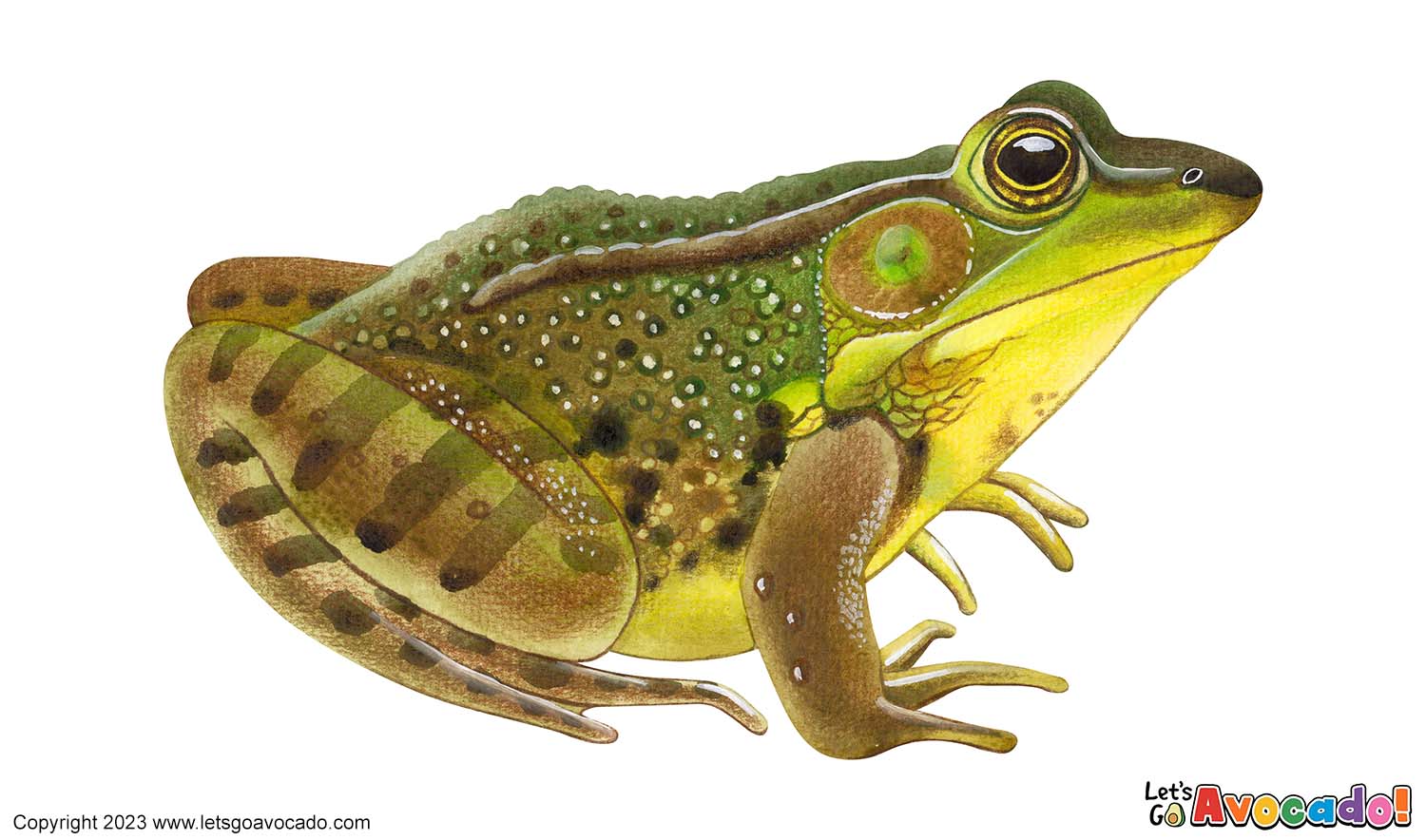

Green Frog
Bronze Frog
Lithobates clamitans
This page may contain affiliate links.
Read our disclosure and privacy policy here.
The Green Frog (Lithobates clamitans) is a widely recognized species of frog native to North America. It is known for its emerald green coloration, which provides excellent camouflage in aquatic environments. Adult Green Frogs can reach lengths of up to 4 inches (10 centimeters) and have smooth skin with prominent ridges along their backs. They inhabit a variety of freshwater habitats, including ponds, lakes, marshes, and slow-moving rivers. One of their most distinctive features is their ability to produce loud, resonating calls that resemble a banjo string being plucked. These calls are often heard during the breeding season as males attract females and establish territories. Green Frogs are skilled swimmers and agile jumpers, and they feed on a diet that consists mainly of insects, spiders, small fish, and even other frogs. Their lifecycle involves an aquatic tadpole stage, where they undergo metamorphosis and develop into adult frogs. While the Green Frog is not currently considered a threatened species, habitat loss and pollution pose potential threats to their populations. These frogs play an important role in ecosystemsAn ecosystem is a community of living organisms, like insects and birds, and non-living components, like water and rocks, that interact with each other in a specific area. Learn More as both predators and prey, contributing to the balance and health of their environments.
Green Frog
Common Name
Other Names
Latin Name
Distribution
Appearance
Size
Habitat
Behavior
Diet
Lifecycle
Vocalization
Defense Mechanisms
Ecological Importance
ConservationThe act of protecting and preserving natural resources and the environment. Conservation efforts are important to protect beavers and their habitats. Learn More Status

There’s a lot to explore right where we are, in our own neighborhoods and backyards! Join us while we get off the couch and explore the everyday wonders of nature, science, space, engineering, art, and anything else we stumble upon during on our adventures.







